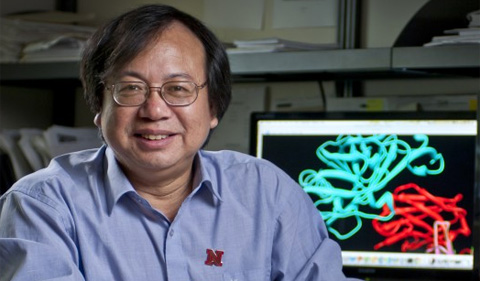Ohio University’s Chemistry and Biochemistry Colloquium Series presents Dr. Mark DiStefano on “Protein Lipid-Modification: From Chemical Biology to Protein-Based Nanoscale Materials” on Monday, Oct. 10, at 4:10 p.m. in Clippinger Laboratories Room 194.
DiStefano is Distinguished McKnight Professor & Merck Professor, Department of Medicinal Chemistry, at the University of Minnesota.

Dr. Mark Distefano
Abstract: Protein lipid-modification involves the attachment of hydrophobic groups to polypeptides within cells after they are synthesized by ribosomes. The purpose of these modifications is to target particular proteins to the cell membrane where they can relay chemical messages from the exterior to the cellular interior. Protein prenylation is one example of lipid modification and consists of the addition of either C15 or C20 isoprenoid groups to a variety of proteins. Prenylated proteins play key roles in regulating processes within cells including cell division, shape and differentiation. Of particular note is the observation that protein prenylation is required for the transforming activity of mutant Ras oncoproteins; inhibition of the enzyme farnesyltransferase (which catalyzes protein prenylation) arrests the growth of transformed cells in a variety of models. A number of inhibitors of this enzyme and others in the protein prenylation pathway are currently in clinical trials for cancer therapy and other diseases. A central question in the field of protein prenylation is how prenyltransferases recognize and target specific proteins for modification. From a biological perspective, understanding this process could facilitate the design of new therapeutic agents. From a biotechnology viewpoint, understanding and manipulating prenyltransferase specificity could allow these catalysts to be used to prepare a new generation of chemically modified proteins for a variety of applications. In this presentation, three types of experiments will be reported. First, the use of a new photolabile protecting group that allows lipid modification in live cells to be studied will be described. Next, studies of the specificity of prenyltransferases using a combination of peptide libraries and synthetic isoprenoid analogues will be described. Finally, several examples of how prenylation using synthetic substrates is being used to prepare novel protein-based materials and nanoscale products for diagnostic and therapeutic applications.



















Comments